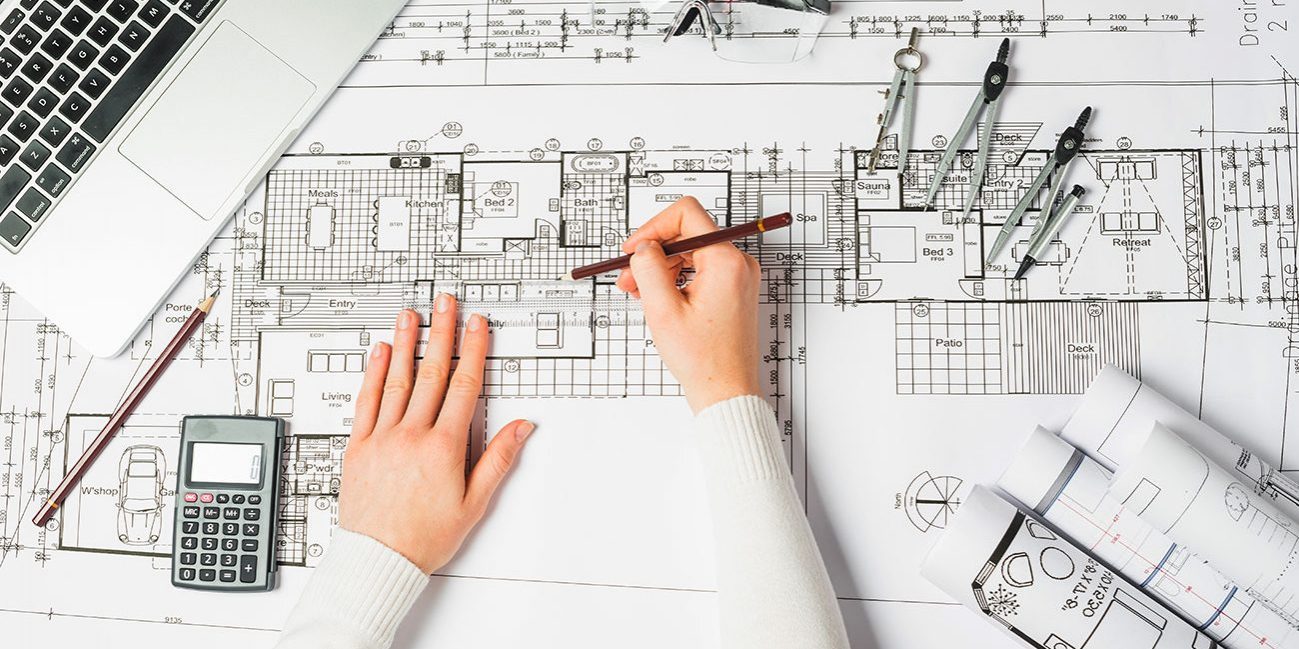Architect Guide to Green Building Materials
Architect Guide to Green Building Materials
Blog Article
The Duty of Sustainability and Innovation in Modern Architect Practices
Sustainability and technology are improving contemporary architecture in ways you might not anticipate. By accepting wise innovations and green products, architects are not simply creating structures; they're crafting environments that boost our high quality of life. This shift isn't simply about aesthetics or functionality; it has to do with establishing a responsible strategy to our planet's future. What's driving this makeover, and exactly how can these changes influence your neighborhood?
The Relevance of Sustainable Architecture
Lasting architecture is crucial not just for the environment however additionally for enhancing our lifestyle. You're not simply minimizing your carbon impact; you're developing rooms that advertise health and well-being when you embrace sustainable style. Envision staying in a home that harnesses natural light, improves air quality, and lowers energy costs. You'll feel more connected and comfortable to nature.
In addition, lasting design commonly causes stronger communities. When structures are made with eco-friendly practices, they can motivate others to adhere to suit, promoting a culture of sustainability. You'll see raised home values and a greater feeling of pride in your environments.
Finally, by prioritizing sustainability, you're spending in the future. You're making sure that future generations delight in a healthier world and dynamic communities. So, when you consider your following job, think concerning how lasting architecture can boost your life and those around you.
Cutting-edge Materials Changing Building Practices
As you discover ingenious products in style, you'll locate that eco-friendly building products are reshaping just how we think regarding sustainability. Recycled content innovations are offering new life to waste, while wise product innovations boost building performance. These advancements not just advertise eco-friendliness but likewise press the boundaries of style.
Eco-friendly Construction Products
While typical building and construction materials commonly contribute to ecological deterioration, biodegradable construction products are emerging as a practical alternative that changes building techniques. By integrating eco-friendly choices right into your layouts, you're not simply enhancing aesthetic charm; you're also making a favorable impact on the planet. As you adjust to these ingenious materials, you'll locate that they use durability and convenience, enabling you to create frameworks that align with modern-day worths of sustainability and duty.
Recycled Material Innovations
In recent times, ingenious materials with high recycled web content have revolutionized structure techniques, offering designers exciting new choices - Architect. You can now include materials like recycled steel, which not just minimizes waste but likewise flaunts outstanding stamina. Recycled glass is an additional great selection, offering aesthetic allure while reducing environmental influence

Smart Product Technologies
Smart product innovations are reshaping the means you assume concerning constructing methods, using dynamic solutions that adjust to altering conditions. These cutting-edge products, such as self-healing concrete and thermochromic glass, enhance structure efficiency and sustainability. By integrating clever products, you can create energy-efficient designs that react to their atmosphere, reducing total power consumption.
The Assimilation of Smart Technologies in Style
As technology advances, integrating smart services right into building design ends up being necessary for creating reliable and sustainable spaces. You can include smart modern technologies like developing management systems, which optimize power use and improve occupant convenience. Sensing units can keep track of ecological conditions, adjusting illumination and temperature level instantly based upon real-time data. This versatility not only boosts user experience yet also minimizes energy usage.
Including Internet of Things (IoT) tools allows for seamless communication amongst different building systems, enabling you to make data-driven decisions that improve capability. Smart products that react to environmental changes can even more boost your layout, offering dynamic services to ever-changing conditions.
Energy Efficiency and Renewable Resource Solutions
While numerous engineers concentrate on aesthetic appeals, focusing on power effectiveness and renewable resource options is important for sustainable design. You can start by integrating passive solar design, which optimizes natural light and heat, decreasing dependence on fabricated illumination and home heating systems. Make use of high-performance insulation and energy-efficient home windows to decrease power loss.
Do not ignore renewable resource systems-- mount photovoltaic panels or wind turbines to produce tidy energy on-site. You can likewise consider incorporating geothermal home heating and cooling down systems for a much more sustainable temperature level regulation.
By selecting energy-efficient devices and illumination, you'll not only lower power intake however also lower functional expenses for building owners.
Integrating these principles right into your designs not only benefits the environment yet additionally boosts the building's allure and value. Inevitably, your dedication to power performance and renewable resource will certainly set your jobs apart in an open market.
Water Conservation Approaches in Modern Architecture
Including water conservation strategies right into modern architecture is crucial for producing sustainable structures that minimize ecological impact. You can accomplish this by incorporating rainwater harvesting systems, which accumulate and keep rain for watering and non-potable uses. Executing low-flow components and smart go to the website irrigation systems also minimizes water usage, guaranteeing efficient use throughout the building.
Think about utilizing drought-resistant landscape design, which requires much less water and advertises biodiversity. Incorporating absorptive paving products allows rainwater to penetrate the ground, decreasing drainage and recharging groundwater materials.
Additionally, setting up greywater recycling systems can repurpose water from sinks and showers for bathroom flushing or watering, more conserving resources.
The Effect of Biophilic Style on Wellness
Biophilic style brings nature inside, and you'll see its favorable results on your health and joy. By boosting interior air quality and connecting you with natural aspects, these areas can change your everyday experience. Allow's discover how integrating these features can increase your general well-being.
Nature's Influence on Health and wellness
When you integrate elements of nature right into your surroundings, it can considerably improve your physical and mental wellness. Biophilic design, which stresses natural light, plants, and natural products, fosters a sense of link to the outdoors. Embracing biophilic style is an action toward a healthier way of living.
Enhancing Indoor Air Quality
While several people concentrate on visual appeals and performance in style, improving indoor air quality plays a vital function in your overall well-being. By including biophilic layout aspects, you can improve air quality normally. Focusing on these facets in your style will not only raise your space yet likewise advertise a sense of calm and health.
Link With All-natural Aspects
When you get in touch with natural components in your area, you not only enhance its visual charm however also greatly improve your wellness. Biophilic design urges you to include functions like plants, all-natural light, and natural materials. These components create a relaxing environment, reducing stress and anxiety and anxiousness. Research study reveals that being around nature can enhance your state of mind and cognitive function, assisting you really feel more concentrated and productive. When you invite the outdoors inside, you could discover far better air high quality and raised comfort. Easy address adjustments, like adding a living wall or huge windows, can exceptionally impact your experience (Architect). Eventually, incorporating nature right into your setting leads you to a much healthier, better way of life, fostering a much deeper connection to the world around you.
Future Trends in Sustainable Architectural Practices
As the world deals with pushing ecological challenges, architects are progressively accepting cutting-edge techniques to sustainability that redefine just how we layout and develop. You'll see a rise in biophilic design, integrating nature into metropolitan areas to improve health and reduce energy consumption. Smart innovations, like AI and IoT, are enhancing power monitoring in structures, enhancing source usage, and minimizing waste.
Moreover, modular construction is acquiring grip, enabling faster, much more effective structure procedures while minimizing ecological effect. The usage of sustainable products, such as reclaimed wood and recycled metals, is coming to be standard practice. As you check out these trends, expect a change towards circular style, stressing the lifecycle of products and advertising reuse and recycling.
These forward-thinking techniques not only address eco-friendly issues however additionally produce healthier, extra resistant neighborhoods. By remaining notified about these patterns, you can aid form a sustainable future in architecture.
Frequently Asked Inquiries
Exactly How Can Sustainability Affect Project Prices and Budget Plans?
Sustainability can significantly impact project costs and spending plans. You could discover that preliminary investments in environmentally friendly materials or innovations result in long-lasting cost savings through power performance, decreased waste, and potential government motivations, eventually stabilizing the total costs.
What Certifications Exist for Sustainable Style?
You'll locate several accreditations for lasting architecture, including LEED, BREEAM, and the Living Structure Difficulty. These certifications aid you show your commitment to sustainability and can boost your task's integrity and appeal to customers.
Just How Does Neighborhood Society Influence Lasting Layout?
Local culture forms lasting layout by reflecting neighborhood traditions, materials, and worths. You'll find that integrating local appearances and methods not just respects heritage however likewise improves the performance and approval of your building tasks.
What Duty Does Customer Education Play in Lasting Practices?
Client education and learning's essential for promoting lasting techniques. When you educate customers concerning advantages, prices, and environmental impacts, you empower them to make educated decisions, cultivating a joint strategy that enhances the project's overall sustainability.

Exactly How Can Architects Gauge the Success of Sustainability Initiatives?
You can measure the success of sustainability efforts by tracking power intake, assessing product efficiency, and event responses from clients. Routine audits and contrasts against criteria will certainly assist you refine your methods and display improvements efficiently.
By incorporating smart materials, you can produce energy-efficient styles that respond to their atmosphere, minimizing overall energy usage.While several architects focus on appearances, prioritizing energy effectiveness and eco-friendly power options is necessary for lasting layout. Biophilic design, which emphasizes natural light, plants, and organic products, cultivates a feeling of link to the outdoors. Biophilic style encourages you to incorporate features like plants, all-natural light, and natural products. As you check out these trends, expect a shift toward round this page style, highlighting the lifecycle of materials and advertising reuse and recycling.
Report this page